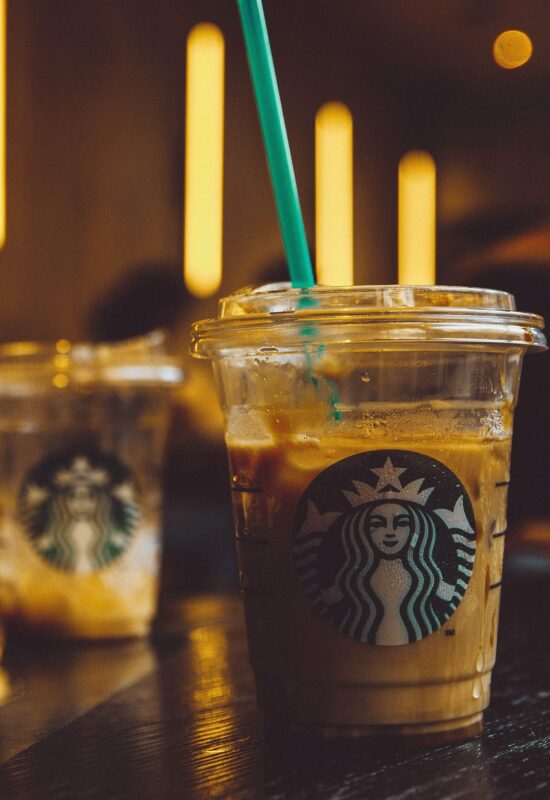
Blog
Starbucks to Replace Plastic Straws With More Ecofriendly

Did you hear this big news? Starbucks will change its straw into bioplastic one. Starting in 2025, Starbucks Japan is rolling out biodegradable plastic straws—a move that could significantly reshape how we think about sustainability, one sip at a time.

First Change 5 Years Ago
Have you ever tried using a paper straw? What were your thoughts on it? For instance, when enjoying a Frappuccino for 20 minutes or longer, did you find the straw becoming soft and less functional? In 2018, Starbucks Coffee Japan began transitioning from traditional plastic straws and containers to paper alternatives, aiming to eliminate approximately 200 million plastic straws annually. However, many customers expressed concerns about the sogginess of paper straws. While this shift was praised for being environmentally friendly and promoting sustainability, there were widespread complaints about the straws’ lack of comfort and durability. In response, Starbucks introduced new biodegradable plastic straws, combining durability with eco-friendliness to address these concerns.
A New Chapter: The Bioplastic Revolution
Starbucks’ latest innovation involves straws made from Green Planet®, a plant-based biopolymer developed by Kaneka Corporation. These straws aren’t just durable; they’re designed to break down naturally into carbon dioxide and water when exposed to microorganisms in soil or seawater. Imagine a world where your straw doesn’t outlive you by hundreds of years! Starting in January 2025, customers in Okinawa will be the first to try these new straws, with a nationwide rollout in Japan set for March.

Why This Matters
You might be wondering, why go through all this effort for a straw? The answer lies in the environmental impact. Here are some reasons why this change is crucial:
- Less Plastic Pollution: Green Planet® straws, on the other hand, decompose into harmless natural components.
- Lower Carbon Footprint: These plant-based straws rely on renewable resources, unlike fossil fuel-based plastics. Plus, they can be composted, further reducing their environmental impact.
- A Circular Economy: By promoting materials that are reusable, recyclable, or compostable, Starbucks is contributing to a system that minimizes waste and maximizes resource efficiency.
The primary issue with plastic straws is that they are not easily biodegradable. When disposed of in landfills, they contribute to greenhouse gas emissions and pose a significant threat to marine life. However, the new straws mitigate these risks. In addition, we can compost it, so this new straw seems flawless, would ‘t you agree?

Precautions And Challenges Along the Way
Of course, no big change comes without its hurdles. For biodegradable plastics to work as intended, they need the right conditions, such as industrial composting facilities or natural environments rich in microorganisms. Without proper disposal systems, even these innovative straws could end up sitting in landfills for longer than we’d like.
Here are some examples:
・Production Impact: Bioplastic production can consume significant energy and resources, potentially competing with food production and contributing to land-use changes.
・Limited Degradation: Bioplastics may only break down in specific conditions like industrial composting, not in landfills or the ocean.
・Cost: Bioplastics are generally more expensive to produce, raising costs for businesses and consumers.
・Limited Durability: Bioplastic straws may soften and lose functionality when used for extended periods or in thick drinks.
This is where education becomes crucial. Starbucks has the opportunity to educate its customers on the proper disposal practices. By providing guidance on how to ensure their straw fulfills its eco-friendly purpose, Starbucks also encourages customer cooperation.

Part of a Bigger Picture
These straws are just one part of Starbucks’ broader sustainability efforts. In recent years, the company has introduced straw less lids, explored alternative materials for cups, and set ambitious goals to reduce carbon emissions, water usage, and landfill waste by 50% by 2030. Additionally, Starbucks is committed to sourcing 100% of its coffee ethically through its Coffee and Farmer Equity (C.A.F.E.) Practices, ensuring fair wages and sustainable farming. With a goal of carbon neutrality by 2050, Starbucks also supports community development through its Foundation, helping youth, veterans, and those in need. Each step builds on the last, creating a ripple effect of positive change.

In Conclusion
Starbucks’ introduction of Green Planet® straws is a game-changer, addressing the durability issues of paper straws, reducing plastic waste, and supporting a more sustainable future. What’s the goal behind this move? Clearly, the company recognizes the importance of ESG and CSR. By taking environmental actions, they not only appeal to customers but also build brand loyalty. In an economy increasingly focused on sustainability, such efforts are vital. So, let’s take action. At Carbon Da Capo, we provide high-quality carbon credits to support both corporate and individual contributions toward a cleaner world.
